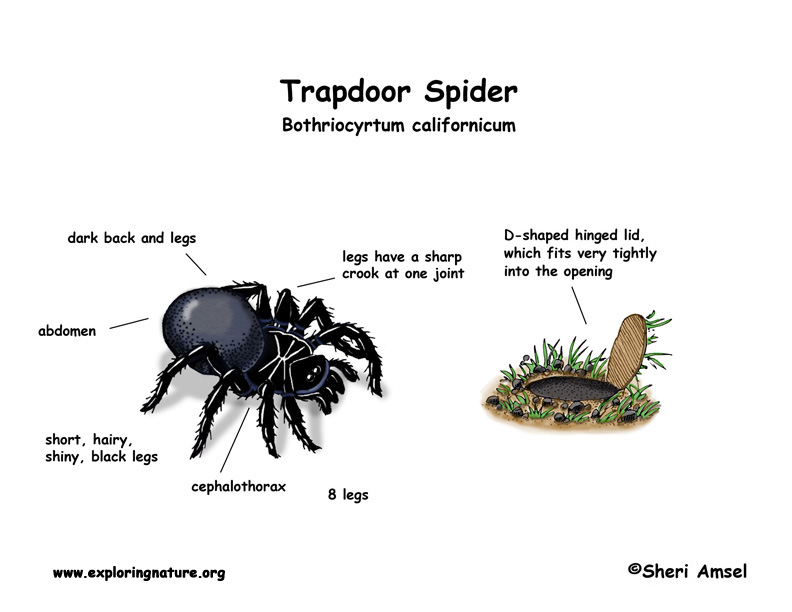

They are found in the southern half of the U.S. from Virginia south to Florida and west to California. They are rare in their range and hard to spot even where they do live.
They live hidden in their burrows in grassy areas, on hillsides, and in dirt embankments.
Males are all black and .25 -.5” long. Females have a lighter-colored body. They are larger than males and can reach up to 1” long. They have short, shiny, black legs. The males have smaller, darker bodies and longer legs. Their legs have a sharp crook at one joint.
They burrow a few inches into the ground and line their burrow with silk. The opening has a D-shaped, hinged lid, which closes tightly protecting the spider inside. These spiders often build their burrow into the side of a bank and pop out to capture prey as they go by.
They eat insects and other spiders.
Females lay large numbers of eggs in their burrow and care for the young (spiderlings) for their first winter. Young leave by ballooning away on the wind on a strand of silk.
Kingdom: Animalia
Phylum: Arthropoda
Class: Arachnida
Order: Araneae
Suborder: Mygalomorphae
Family: Ctenizidae
Genus: Bothriocyrtum
Species: B. californicum
When you research information you must cite the reference. Citing for websites is different from citing from books, magazines and periodicals. The style of citing shown here is from the MLA Style Citations (Modern Language Association).
When citing a WEBSITE the general format is as follows.
Author Last Name, First Name(s). "Title: Subtitle of Part of Web Page, if appropriate." Title: Subtitle: Section of Page if appropriate. Sponsoring/Publishing Agency, If Given. Additional significant descriptive information. Date of Electronic Publication or other Date, such as Last Updated. Day Month Year of access < URL >.
Amsel, Sheri. "Spider (Trapdoor) " Exploring Nature Educational Resource ©2005-2024. December 14, 2024
< http://exploringnature.org/db/view/Spider-Trapdoor- >

